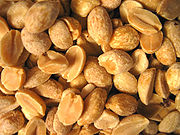 Food allergy appears to be increasing in prevalence and carries a strong economic burden. Some of the risk factors include:
Food allergy appears to be increasing in prevalence and carries a strong economic burden. Some of the risk factors include:- dietary factors, such as deficiency of vitamin D and timing of complementary foods
- genetic factors, such as filaggrin loss-of-function mutations
New mechanisms include the role of invariant natural killer T cells and dietary isoflavones.
New treatments are currently in development such as:
- Sublingual and oral immunotherapy (SLIT and OIT), and a Chinese herbal formula show promising in vitro results
- having children ingest foods with baked-in milk if they tolerate it, can have immunotherapeutic effect
- the use of anti-IgE (e.g. omalizumab) with or without concomitant immunotherapy
Most experts agree that SLIT and OIT are not ready for prime time yet.
References:
Advances in allergic skin disease, anaphylaxis, and hypersensitivity reactions to foods, drugs, and insects in 2011. Sicherer SH, Leung DY. J Allergy Clin Immunol. 2012 Jan;129(1):76-85.
Image source: Roasted peanuts as snack food, Wikipedia, public domain.